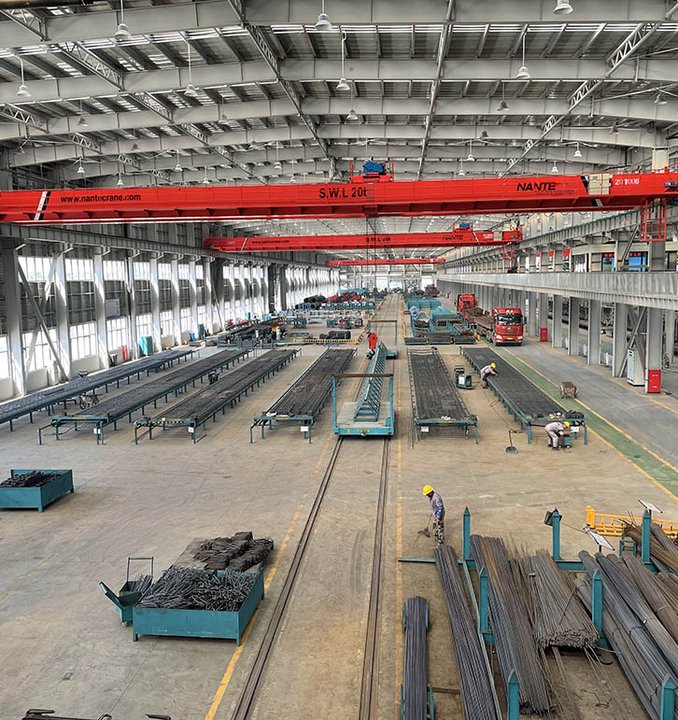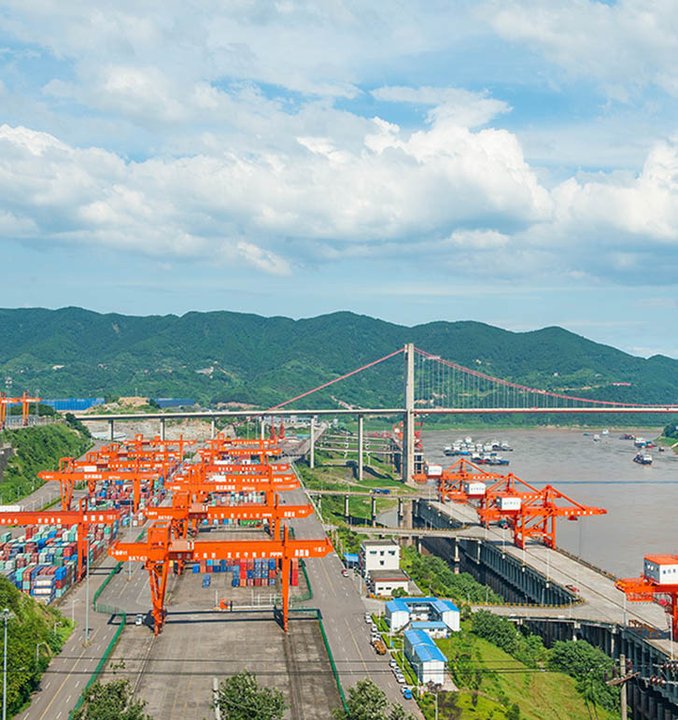Technical Breakdown: Overhead Cranes vs. Gantry Cranes in Industrial Use
Date: 2024-10-29 Share:
Introduction to Crane Systems
In the realm of industrial lifting solutions, crane systems play a pivotal role in enhancing operational efficiency. Two primary types of cranes that are widely utilized in various industries are overhead cranes and gantry cranes. Understanding the fundamental differences between these cranes can help professionals select the appropriate system that aligns with their operational requirements. In this article, we explore the characteristics, structural differences and ideal applications of both overhead cranes and gantry cranes, providing insights that are essential for industrial experts.
What Are Overhead Cranes?
Overhead cranes, often referred to as bridge cranes, are systems designed to lift and move heavy loads across a designated workspace. These cranes typically consist of parallel runways equipped with a traveling bridge that carries a lifting mechanism. The design allows overhead cranes to operate efficiently in manufacturing and storage facilities by eliminating ground level obstructions and optimizing vertical space. They are especially effective in environments where precise horizontal movement of materials is crucial. Nante Crane, a leading provider in the industry, offers a range of Overhead Cranes tailored to meet the diverse needs of various sectors.

What Are Gantry Cranes?
Gantry cranes are similar in function to overhead cranes but are characterized by their support structure. These cranes feature a frame that supports a hoist and is designed to move on wheels or tracks, typically at ground level. Gantry cranes are often used in outdoor settings or large open spaces, allowing for greater flexibility in lifting and transporting materials. Their versatility makes them suitable for a wide range of applications, including shipyards, construction sites, and manufacturing plants. Nante Crane also specializes in Gantry Cranes that can be customized to fit specific operational needs.

Comparing Structural Components
How Does the Design Vary?
The design of cranes and gantry cranes varies significantly which affects how they are used in industries. Overhead cranes typically have a bridge that extends across the workspace and hoisting equipment that moves along the bridge. This setup enables them to lift loads and maneuver, in spaces more effectively compared to gantry cranes. In comparison¸ gantry cranes feature a structure supported by legs that raise the lifting mechanism¸ providing increased accessibility at ground level¸ advantageous for outdoor settings or handling bulky machinery. Recognizing these design intricacies is essential for industry experts aiming to optimize their productivity levels.
Usage in Different Industrial Environments
Which Industries Benefit Most from Overhead Cranes?
Industries where there is a need for lifting and precise object movement like manufacturing and automotive sectors rely heavily upon overhead cranes to boost efficiency and reduce risks associated with manual labor tasks. The widespread reach of overhead cranes makes them suitable for scenarios where transportation paths are fixed and limited Operating in high clearance spaces, also allows for a smooth workflow that aligns with the requirements of contemporary industrial practices.
Which Industries Benefit Most from Gantry Cranes?
In industries that require flexibility and maneuverability as factors for success, gantry cranes are a choice. Construction sites, shipyards, and warehouses all benefit greatly from the versatility of gantry cranes, which can be easily positioned and relocated as needed. Their durability makes them ideal for handling heavy-duty tasks like lifting shipping containers or large machinery. Additionally, their design allows for access at ground level making them a practical option for a range of uses including material loading and unloading as well as assembly and renovation projects.
Industrial professionals can boost their efficiency by gaining an understanding of the features and uses of overhead cranes and gantry cranes before making decisions on which type of lifting solution – stationary or portable – to opt for in order to enhance productivity and safety within industrial environments.
Operational Efficiency and Safety Measures
Are Overhead Cranes More Efficient?
In settings where space is limited and efficiency is key overhead cranes are carefully crafted to optimize operations. Their structure features tracks and a movable bridge enabling them to make horizontal movements while making the most of vertical space. This smart design ensures workflow. Boosts productivity by avoiding slowdowns. Overhead cranes excel at lifting loads cutting down the time needed for each lifting job and creating a more efficient operational flow.
In addition to that point safety measures like limit switches and overload safeguard systems integrated into cranes are there to reduce risks and improve the safety of workers on site. With operators having visibility these cranes can navigate through surroundings without hindering other operations. The accuracy of their movements does not enhance the lifting process. Also notably decreases wear and tear on machinery resulting in reduced maintenance expenses in the long run. For businesses focusing on efficient and safe material handling operations overhead cranes offer a solution.
Are Gantry Cranes More Flexible?
Gantry cranes stand out for their versatility in work settings compared to cranes due to their capability to operate using wheels or tracks that enable them to navigate both outdoor and large indoor areas effectively. This unique mobility feature empowers gantry cranes to be situated where they are required. A quality highly valued in the construction and logistics sectors where direct access to the cargo is crucial.
In addition to that gantry cranes are flexible. They Can be moved around effortlessly, making them suitable for short-term projects or locations needing lifting spots. Their ability to be mobile allows them to handle a variety of lifting jobs from construction work to workshops without the need for installations. The open structure underneath the crane enables convenient access to the cargo, which can be highly beneficial in paced work settings where operational needs can change quickly.
Cost Factors in Acquisition and Maintenance
Initial Investment Required for Overhead Cranes
The upfront costs for cranes can be quite significant because of their design and installation needs. The price is influenced by factors like the lifting capacity span length and the complexity of the system. Usually, these cranes demand an investment due to the heavy-duty materials used custom design specifications, and the need for precise installation to guarantee safety and operational dependability.
Although the initial cost may seem high at a glance for cranes the long-term advantages they offer can outweigh this expense. By enhancing efficiency and safety measures that result in decreased labor expenses and a decline in incidents the payoff, from investing in cranes becomes evident over time. Moreover, numerous manufacturers offer warranties and assistance to guarantee the operation of their systems, which ultimately helps organizations handle potential costs associated with operational downtime.
Long-term Maintenance of Gantry Cranes
However, Gantry cranes might require a cost compared to other options but their upkeep needs can add up over time as they are constantly being moved around and can wear out from being used over different surfaces frequently. It’s super important to keep up with checks and maintenance to make sure they stay safe and last longer which can end up costing more in the run if not taken care of properly!
However, the flexibility of gantry cranes frequently balances out these maintenance expenses. Their simple design makes repairs and part replacements easy resulting in servicing times. Regular maintenance can also extend efficiency and effectiveness as a maintained gantry crane will reliably provide accurate performance across various tasks.
Making the Right Choice for Your Operation
What Should You Consider When Choosing Between Overhead and Gantry Cranes?
When deciding between cranes and gantry cranes, it’s important to consider key factors. Firstly the operational needs and the working environment play a role in this decision. Overhead cranes might be better suited for spaces that require lifting whereas gantry cranes could be a great choice for open areas that need flexibility and easy movement.
When deciding on a crane type to use in settings like cranes or gantry cranes, it’s crucial to factor in budget considerations too. Although overhead cranes may come with a cost investment their effectiveness could result in saving money over time through reduced operational expenses. On the other hand gantry cranes may seem like an expensive option at first glance but it’s important to also account for maintenance plans and operational adaptability when evaluating total costs. Talking to experts in cranes can offer insights customized to your specific needs considering both budget limitations and operational objectives.
It is crucial to prioritize safety regulations and worker accessibility in your approach strategy foremost. Choosing a crane over a gantry crane requires discussions on safety training and ergonomics with teams to guarantee a safe and productive working environment. Examining these aspects of operations in industries can boost efficiency at work sites. Prioritize worker safety while gaining a competitive edge in their industries.
 English
English






